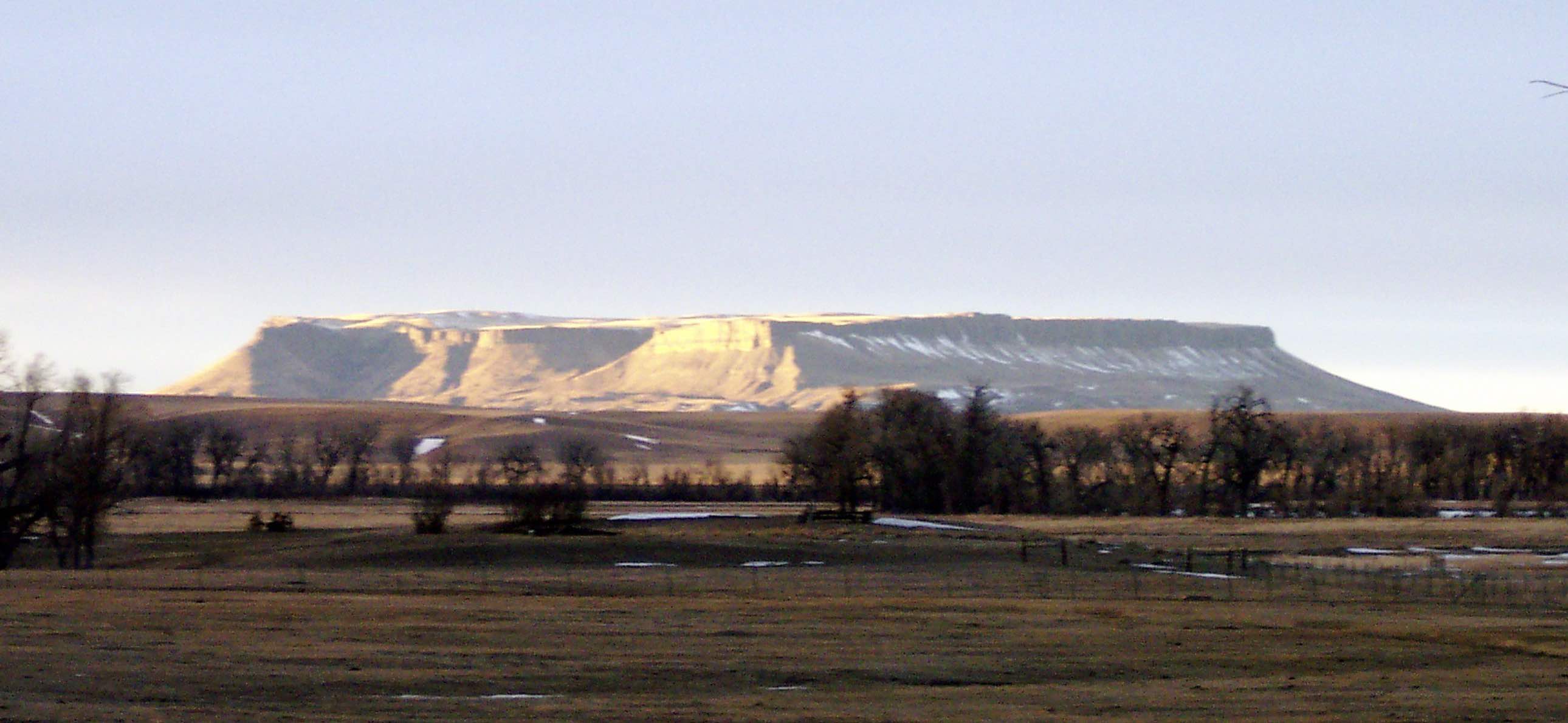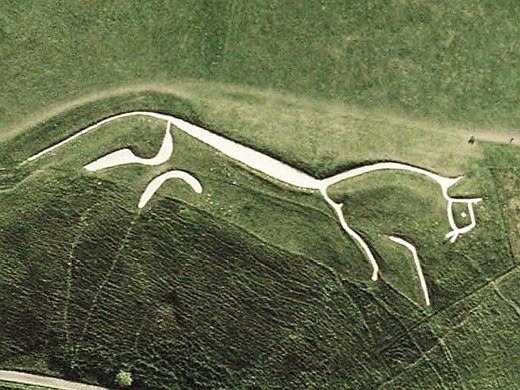On a hillside, near the summit of one of the highest hills in southwestern England’s Vale of the White Horse, are two examples of that could play in a debate on “what is art.”
The first example is the Uffington White Horse, a 374-foot long, stylized horse formed from trenches cut into the grass with those cuts filled with crushed white chalk. The only time that humans have covered it was during WW II when it was hidden under grass and hedge trimmings to protect it from Luftwaffe pilots using it to navigate in their bombing raids.
No one really knows for sure when or even why the image was created. There are even some who believe that it does not represent a horse, although it has been called a horse since the 11th century. From soil analysis, archaeologists have dated the image to the Bronze Age, between 1380 and 550 B.C. Iron Age coins have been found that bear the image. Some say it commemorated an Anglo-Saxon king’s victory over invading Danes, while others say that is only folklore.
However, the age or purpose of the image may have little meaning because the flowing, graceful design is timeless. And, whether or not it hangs on a wall seems unimportant.

The other example is a beautifully constructed and highly utilitarian stile in the sheep pasture just down the hill from the Uffington White Horse. The word probably comes from an Old English word “stigel” which referred to a ladder which helps in climbing. A stile is a simple wooden structure built to give people a way to easily climb over a fence separating two fields.
The stile is a great example of how fine handcraft has to satisfy a standard of aesthetics while being usable. Imagine if the stile in the photo were constructed out of thinly planed, rare wood, carefully polished to a fine shine. Then picture an impeccably-dressed person using the stile to walk over the fence…and the wood fails, causing the stile to collapse into the muddy soil below. That the stile probably would no longer be considered as beautiful for it had failed the utility test.
Both the image on the hillside and the stile below it show how lasting design grows out of an application of creativity to a need. Both speak to art infusing life.
[Revised and reprinted from January 16, 2011 post. Uffington Horse photo from Wikipedia; stile photo by E.L.Kittredge.]


Comments are closed, but trackbacks and pingbacks are open.